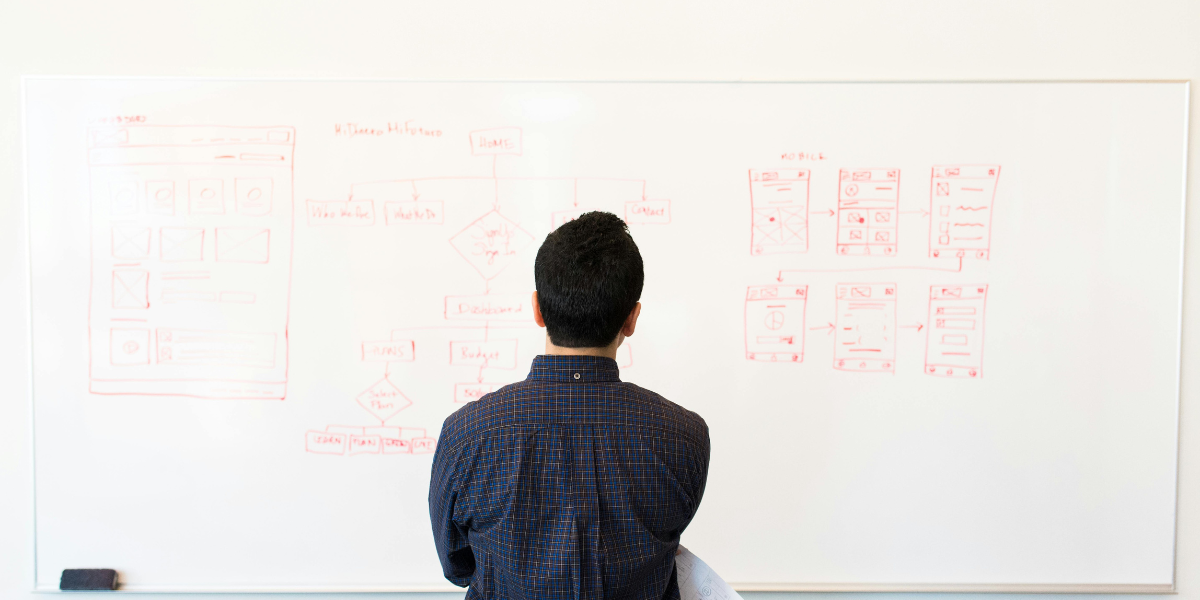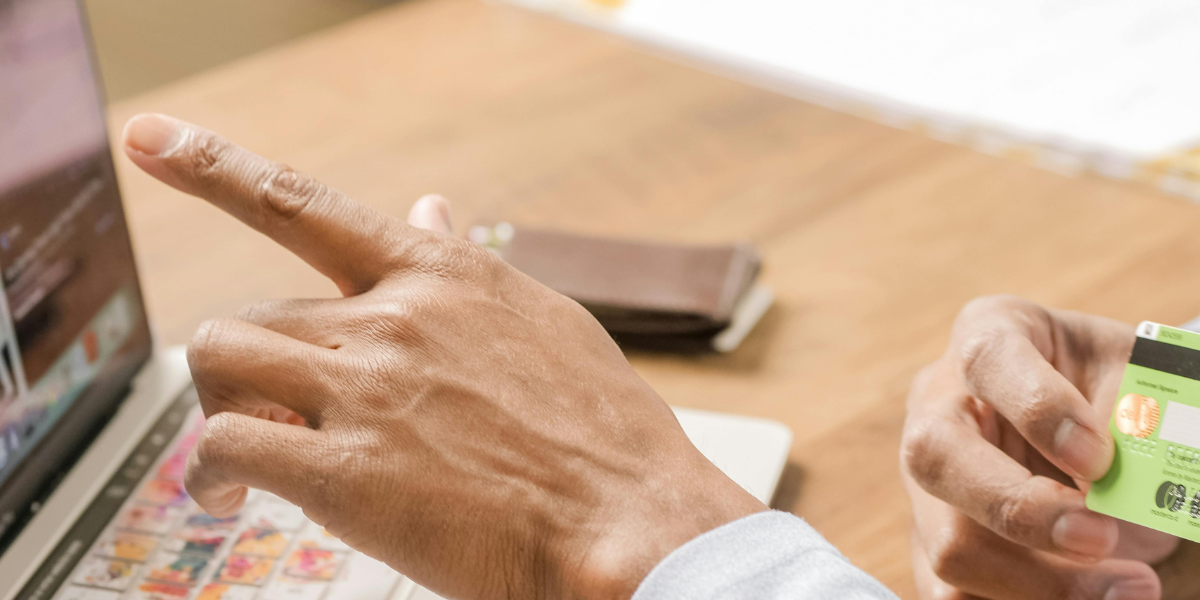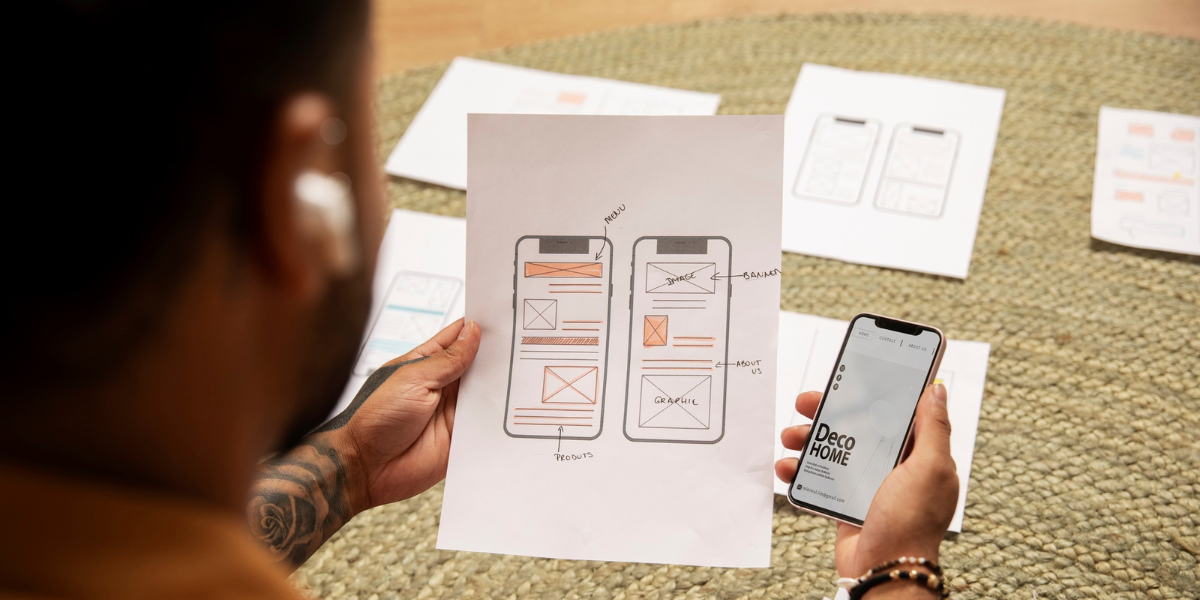What to Look for in a UX/UI Software Development Partner
When searching for a UX/UI software development partner, you are not just hiring a team to build interfaces—you are choosing a collaborator to help shape your product's user experience and visual identity. A great partner combines technical expertise, creativity, and a deep understanding of your users to deliver intuitive, efficient, and visually appealing solutions.
Selecting the right partner can be challenging, especially with the number of firms available today. However, understanding what makes a good UX/UI partner stand out can make all the difference. This guide will walk you through everything you need to know to make an informed decision.

Why the Right UX/UI Partner Matters
In today’s competitive digital environment, user experience (UX) and user interface design are no longer optional—they are essential for ensuring business success. The digital world is saturated with products competing for user attention, and your UX/UI design often serves as the first impression. A strong user interface design ensures that your product is visually appealing but also functional, intuitive, and capable of converting first-time users into loyal customers.
Your users expect seamless, enjoyable experiences when interacting with digital products. Anything less can lead to frustration and abandonment. Studies show that users form an opinion about a product’s design within milliseconds, and over 88% of users are less likely to return to a website after a terrible experience. This highlights the direct connection between well-executed UX/UI and business success.
The consequences of partnering with an underqualified or misaligned UX/UI team can be severe, including:
High User Churn Rates Due to Frustrating Experiences
A poorly designed interface can leave users feeling confused or overwhelmed. Issues like complicated navigation, unresponsive design, or unclear calls to action (CTAs) drive users away, often never to return.
High churn rates not only destroy your user base but also affect marketing efforts due to the loss of new consumers that were hard to retain due to an unpleasant experience.
Negative Brand Perceptions
Your product’s design is an extension of your brand. An unattractive interface can affect your reputation, making it difficult to attract new potential customers or retain existing ones. When users encounter design flaws, they often associate them with a lack of professionalism or attention to detail, which can harm how they view your brand.
For example, if a payment process is unintuitive or overly complicated, users may question whether they can trust your platform with sensitive information. Over time, this could affect the brand image making it difficult to retain current customers and attract new customers.
Low Conversion Rates and Missed Revenue Opportunities
Nowadays, a well-designed user interface directly impacts your bottom line. Clear, user-friendly design guides users toward key actions, whether they are signing up, making a purchase, or engaging with your content. Poor user interface design often causes confusion or friction, preventing users from completing a purchase.
For example, an e-commerce website with unclear product categories or a confusing checkout process will see lower sales. Similarly, a SaaS platform with poorly designed onboarding may struggle to convert trial users into paying customers. Every interaction matters, and even small design flaws can lead to significant revenue losses.
The Value of a Great UX/UI Partner
On the other hand, a skilled and aligned UX/UI software development partner can transform your vision into a product that resonates with users and achieves your business goals. The right partner does not just create visually appealing designs—they craft experiences that make your product easy to use, enjoyable, and indispensable.
Here is how the right UX/UI partner makes a difference:
Aligning User Needs with Business Goals
A great UX/UI partner ensures that every design decision is rooted in user needs and your business objectives. They understand your users’ pain points, preferences, and expectations. Then craft designs that address those needs while driving conversions and engagement.
For example, if your goal is to increase subscription sign-ups, the UI UX partner will optimize your product’s onboarding flow to guide users seamlessly from awareness to action. If retention is your priority, they will focus on creating engaging, intuitive interactions that keep users purchasing your business products or services.
Combining Strategic Insights with Technical Expertise
The best UX/UI partners do not just focus on aesthetics—they bring strategic thinking and technical skills to your company. They leverage user research, analytics, and industry trends to inform design decisions, ensuring your product is attractive, functional, and data-driven.
Additionally, their technical expertise ensures that the designs are practical and feasible for implementation. By collaborating closely with developers, they create solutions that balance creativity with technical constraints, streamlining the development process and reducing expensive revisions.
Staying Ahead of Trends to Keep Your Product Competitive
A skilled UX/UI partner who is up-to-date on the latest industry trends and technological advancements ensures your product remains modern and competitive. They can incorporate emerging trends such as dark mode, micro-interactions, or AI-driven personalization into your product, giving it an innovative feel that appeals to today’s users.
By integrating thoughtfully the latest trends, they ensure your design feels fresh and relevant while avoiding widgets that do not add real value to the user experience.
Driving Measurable Results
Most importantly, a great UX/UI partner helps you measure success. They establish clear goals and key performance indicators (KPIs) for your product, such as increased user engagement, reduced churn, or improved conversion rates.
They prioritize delivering measurable outcomes, ensuring that your investment in user interface design translates into real, tangible benefits for your business.
A Holistic Approach to Design Excellence
The right UX/UI partner takes a comprehensive approach to design, considering every aspect of your product and how users will interact with it. They focus on creating seamless, end-to-end experiences, from when users encounter your product to their long-term engagement.
This approach includes:
Intuitive Navigation
Intuitive navigation is one of the cornerstones of effective user interface design. It ensures that users can quickly and easily find what they need without confusion, frustration, or unnecessary effort. A poorly designed navigation system can derail the user experience, leading to abandonment or dissatisfaction.
Conversely, a well-thought-out navigation system creates a seamless flow that guides users toward their goals, whether it is finding information, completing a task, or making a purchase.

Responsive Design
Responsive design is no longer a “nice-to-have”—it is key in today’s multi-device world. Users interact with products across various devices, including smartphones, tablets, desktops, and even smart TVs.
A well-executed responsive design ensures that your interface adapts flawlessly to different screen sizes, orientations, and resolutions, maintaining functionality and aesthetic appeal.

Emotional Design
Emotional design goes beyond functionality to create an interface that resonates deeply with users. By leveraging colors, typography, imagery, and animations, your product can evoke positive feelings, build trust, and reinforce your brand identity. When users form an emotional connection with a product, they are more inclined to engage with it, recommend it to others, and develop lasting loyalty.
A strong UX/UI partner also understands that design does not end when it launches. They will help you gather user feedback, analyze performance metrics, and refine your product over time to ensure it continues to meet user needs and business goals.
.png)
Key Qualities to Look for in a UX/UI Software Development Partner
Proven Expertise in User Interface Design
When evaluating potential partners, the first thing to look for is demonstrated expertise in user interface design. A company’s portfolio, case studies, and references provide valuable insight into its capabilities. A partner with a strong record of accomplishment will show evidence of successful projects across various industries, platforms, and user needs.
Some questions to ask when assessing expertise:
Seek partners who prioritize user-centered design principles, crafting interfaces that are both intuitive and enjoyable to use.
Ask for quantitative outcomes from their previous projects, such as increases in user engagement or retention rates, to ensure their designs translate into results.
Strong UX/UI Research Capabilities
Research forms the foundation of every great user interface design. Without research, even the most visually appealing designs may fail to meet user needs or achieve business objectives. Your ideal partner should have robust research capabilities, including qualitative and quantitative methods, to deeply understand your target audience.
Here’s how research plays a role in creating impactful designs:
Partners who integrate these research methods into their process create designs informed on data rather than assumptions. Ensure they explain how their findings will influence design decisions and how they plan to validate their ideas through user or A/B testing.
A Collaborative Design Approach
Collaboration is critical for creating a product that aligns with your vision and goals. A good UX/UI partner will work closely with your team, maintaining open communication and transparency throughout the project. Their process should be iterative, allowing business adjustments based on your feedback and evolving requirements.
Here is what to look for in a collaborative partner:
Collaboration also extends to how they incorporate stakeholder feedback. Your partner should actively seek input from your team, and assimilate your insights while providing expert guidance to refine ideas further. This iterative process ensures the final product is functional and aligned with your vision.
Adaptability to Emerging Trends and Technologies
UX/UI design trends and technologies evolve rapidly, making it crucial for your partner to stay ahead of the curve. A partner who keeps up with emerging trends ensures your product remains competitive and resonates with modern users.
Some key trends to consider include:
Cross-Functional Skills Beyond Design
While user interface design is the core service, a professional UX/UI partner brings additional value through expertise in related disciplines.
These cross-functional skills ensure your product performs well not just visually but technically and operationally:
These additional skills show an integrated approach to product design, ensuring the result is cohesive, functional, and ready for market.
Best Practices for Evaluating Potential Partners
Choosing the right UX/UI partner requires careful evaluation.
Following these best practices will help you identify the team best suited to meet your needs:
Review Case Studies and Portfolios
A partner’s portfolio provides a window into their capabilities and style. When reviewing their work, look for:
Case studies that include detailed metrics and client testimonials offer the most valuable insights.
Conduct Interviews and Assess Communication
Interviews are an opportunity to understand how a partner works and whether their approach aligns with your goals.
Ask them about:
Their answers should demonstrate a combination of technical expertise, strategic thinking, and a user-centered approach.
Request Prototypes or Spec Work
If you are unsure about committing to a full project, requesting a prototype or small test project can help you evaluate their skills. This trial run allows you to assess their design capabilities, responsiveness to feedback, and ability to meet deadlines without committing significant resources.
Common Red Flags to Avoid
Not all UX/UI partners are created equal, and choosing the wrong partner can lead to wasted resources, missed deadlines, and a subpar product.
Identifying red flags during the evaluation process is crucial to avoiding these downfalls. Below are some of the most common warning signs that should make you think twice about moving forward with a potential collaborator.
Rushing the Research Phase
One of the most significant red flags is when a UX/UI partner overlooks or outright skips the research phase. Research is fundamental to effective user interface design—it ensures decisions are grounded in user needs, market trends, and data. Neglecting research often means relying on assumptions, which can result in designs that may look appealing but fail to function effectively for your users.
Signs of rushed research include:
Unrealistic Promises
Beware of partners that make ambitious guarantees such as extremely short turnaround times, unrealistically low costs, or guaranteed results. While these promises may sound appealing, they often indicate inexperience, poor planning, or a lack of transparency.
Here is why this is a problem:
A trustworthy UX/UI partner will provide realistic timelines and transparent pricing, backed by a well-defined process.
They will be upfront about potential challenges and avoid making promises they cannot control.
Resistance to Feedback
Collaboration is at the heart of a successful UX/UI project. If your partner shows signs of resistance to feedback, it is a clear indicator that they may not be flexible or open-minded enough to deliver a product that aligns with your vision.
Some warning signs include:
Neglecting Accessibility
Inclusive design is no longer optional—it is essential. A partner who does not prioritize accessibility risks alienating a huge portion of your user base and exposing your business to potential legal issues. Accessibility ensures that people with visual, auditory, or motor impairments disabilities, can use your product effectively.
Signs of accessibility neglect include:
Poor Communication Practices
Effective communication is critical to the success of any project. If your UX/UI partner struggles to communicate clearly or consistently, it can lead to misunderstandings, misaligned expectations, and delays.
Watch for these signs of poor communication:
One-Size-Fits-All Solutions
Another major red flag is a partner who applies the same design approach to every project, regardless of the unique needs of your business or users. UX/UI design is not a one-size-fits-all discipline—each product requires a tailored approach based on its target audience, goals, and competitive landscape.
Signs of one size fit all solutions include:
Lack of Emphasis on Testing
Testing is a critical part of the UX/UI process because it validates whether the designs meet user needs and function as intended. A partner who neglects usability testing or skips this step is taking unnecessary risks that could lead to costly redesigns later.
Signs of insufficient testing include:
The Role of Metrics in Choosing the Right Partner
A great UX/UI partner not only delivers visually appealing designs but also helps you measure their impact. Metrics provide a clear picture of whether your user interface design meets business objectives and resonates with users.
Some key metrics to track include:
By focusing on measurable outcomes, your UX/UI partner ensures their designs drive meaningful results for your business.
FAQ: Choosing the Right UX/UI Software Development Partner
1. What makes a good UX/UI software development partner?
A good partner combines technical expertise, user-focused design processes, and effective communication skills. They align with your goals while bringing innovative ideas to enhance your product.
2. How much should I budget for UX/UI design services?
Costs vary depending on the scope and complexity of your project. Expect higher costs for research-intensive or enterprise-level designs but aim for a balance of quality and affordability.
3. How long does a typical UX/UI design project take?
Timelines depend on the project’s size and scope. On average, you can expect 4-12 weeks (about 3 months) for smaller projects and several months for more complex designs.
4. What is the difference between UX and UI?
UX (User Experience) focuses on usability and functionality, while UI (User Interface) deals with the visual and interactive elements of a product. Both are essential for creating seamless digital experiences.
5. How do I know if my UX/UI partner delivers value?
Track key performance indicators (KPIs) like user engagement, conversion rates, and user feedback to measure the effectiveness of their design work.
Axented specializes in striking the perfect balance between design and technology, if you are looking for an external team to help your business move forward, we can help you build your dream product and tech teams. Contact Axented here.